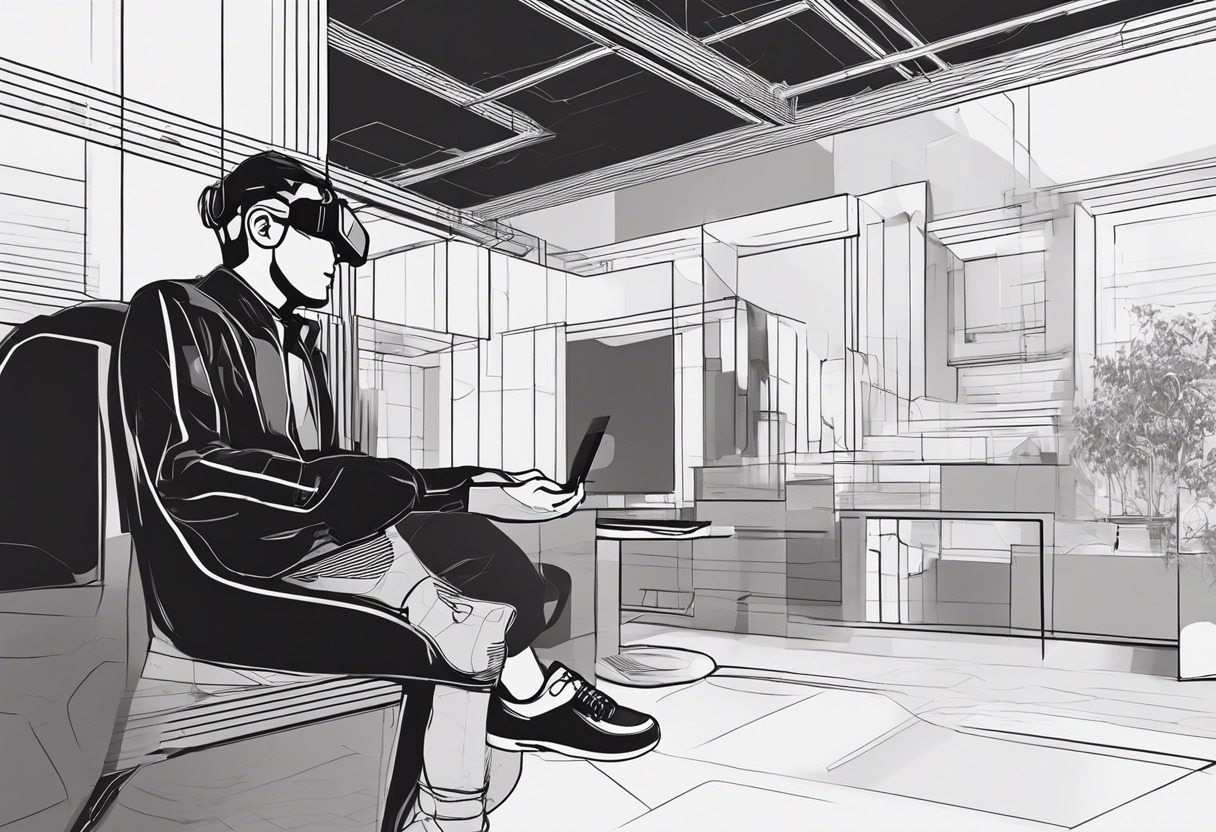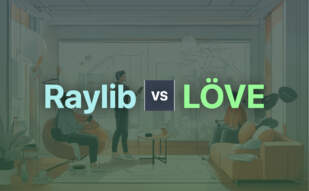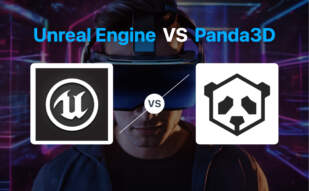An Unreal Engine investment caters to commercial, multi-genre projects necessitating intricate graphics, AR/VR support, and C++ proficiency. Opt for LÖVE if you value a free, cross-platform, scalable framework with Lua scripting and real-time deployment.

Key Differences Between Unreal Engine and LÖVE
- Coding Language: Unreal Engine utilizes C++, while LÖVE embraces Lua.
- Cost: Unreal Engine imposes a 5% royalty over $1 million of revenue, LÖVE is free and open-source.
- Platform Support: Unreal Engine supports platforms for gaming, film and TV. LÖVE caters to Win, Mac, Linux, Android, and iOS.
- Deployment: Unreal Engine offers commercial project templates and marketplace. LÖVE supports real-time code modification and game deployment.
| Comparison | Unreal Engine | LÖVE |
|---|---|---|
| Initial Release | 1998 with game Unreal | January 13, 2008 |
| Platform Support | Desktop, mobile, console, VR | Windows, macOS, Linux, Android, iOS |
| Programming Language | C++ | C++, Lua for scripting |
| Cost | 5% of revenues over $1M, waived for games on Epic Games Store | Free, open-source, under zlib license |
| Key Features | Constructive solid geometry operations, UnrealEd level editor, UDK support for iOS games and apps | OpenGL, SDL, touchscreen support, joystick interface, cross-platform deployment, real-time code modification |
| Latest Version | Unreal Engine 5 launched in 2022 | Multiple versions with added features and bug fixes |
| Popularity | Used widely in various industries including film and TV | Ranked 10th on Itch.io among indie developers (as of July 2018) |
| Resources & Support | Free for schools and universities, project templates, strategic alliances to popularize software | Support via tutorials, wiki, community forums, Discord, subreddit, code contribution welcome |
What Is Unreal Engine and Who’s It For?
Unreal Engine (UE), developed by Epic Games, is an array of 3D graphics game engines, initially designed for PC first-person shooters but now transcending genres and industries, from gaming to film and television. Notably penned in C++, UE caters to a wide spectrum of platforms, including desktops, mobile, consoles, and virtual reality platforms. From indie developers to established game studios, Unreal Engine is purpose-built to meet high demands for visually stunning, interactive content.

Pros of Unreal Engine
- Offers a comprehensive suite of creation tools for photoreal visuals and real-time immersive experiences.
- Supports a wide range of platforms including VR and mobile.
- Provides an active Marketplace for creators to sell their work, with an 88% revenue share.
- Dedicated support for education, offering free access to schools and universities.
Cons of Unreal Engine
- Requires knowledge of C++, which may be difficult for beginners.
- Charges 5% of revenues over USD 1 million.
- Can be resource-intensive, demanding high performance hardware.
What Is LÖVE and Who’s It For?
LÖVE is an open-source, cross-platform game framework revered by developers for crafting engaging video games. Built with a C++ spine and Lua scripting language, LÖVE’s broad platform compatibility embraces Microsoft Windows, macOS, Linux, Android, and iOS. With functionality achieved via libraries SDL and OpenGL, LÖVE stands as an accessible choice for indie developers, hobbyists, and game development competitions.

Pros of LÖVE
- Free, open-source with cross-platform capabilities.
- Allows modification of code with live view of changes.
- Supports hardware acceleration, multi-threading, and networking.
- Community driven support via forums, Discord server, and subreddit.
Cons of LÖVE
- Requires knowledge of Lua programming language.
- Lacks an integrated development environment.
- Documentation may be complicated for beginners.
- Since its open-source, support may be limited.
Code Examples for Unreal Engine & LÖVE
Unreal Engine
This Unreal Engine script is a basic AI patrol code for NPCs (Non-Player Characters). We assume that you have context on AI and pathfinding in Unreal. The code requires the AI Behavior Toolkit plugin and Unreal Engine version 4.25 or later.
// AI Patrol Code
void AMyAICharacter::Patrol() {
if (PatrolPoints.Num() > 0) {
MoveToLocation(PatrolPoints[PatrolPointIndex]->GetActorLocation());
}
}
void AMyAICharacter::OnMoveCompleted(FAIRequestID RequestID, const FPathFollowingResult& Result) {
Super::OnMoveCompleted(RequestID, Result);
if (Result.Code == EPathFollowingResult::Success) {
PatrolPointIndex++;
if (PatrolPointIndex >= PatrolPoints.Num()) {
PatrolPointIndex = 0;
}
Patrol();
}
}
LÖVE
The following LÖVE code snippet is a simple physics engine for a 2D game, showcasing the usage of LÖVE’s built-in Box2D physics wrapper. You require LÖVE 11.3 or later version to optimally run this script.
-- A basic physics engine in LÖVE
function love.load()
love.physics.setMeter(64)
world = love.physics.newWorld(0, 9.81*64, true)
objects = {}
objects.ground = {}
objects.ground.body = love.physics.newBody(world, 650/2, 650-50/2)
objects.ground.shape = love.physics.newRectangleShape(650, 50)
objects.ground.fixture = love.physics.newFixture(objects.ground.body, objects.ground.shape)
objects.ball = {}
objects.ball.body = love.physics.newBody(world, 650/2, 650/2, "dynamic")
objects.ball.shape = love.physics.newCircleShape(20)
objects.ball.fixture = love.physics.newFixture(objects.ball.body, objects.ball.shape, 1)
end
function love.update(dt)
world:update(dt)
end
function love.draw()
love.graphics.rectangle("line", objects.ground.body:getX(), objects.ground.body:getY(), objects.ground.shape:getWidth(), objects.ground.shape:getHeight())
love.graphics.circle("line", objects.ball.body:getX(), objects.ball.body:getY(), objects.ball.shape:getRadius())
end
Unreal Engine or LÖVE – Who Reigns Supreme?
After delving into the particulars of Unreal Engine (UE) and LÖVE, it’s verdict time. Universities, developers, and game creators, let’s decipher which technology suits your needs.
Colleges and Universities
UE’s free access for educational institutions makes it a remarkable choice for universities looking to incorporate game development in their curriculum.Basics through templates, and comprehensive C++ exposure make it an unparalleled learning tool.

Independent Developers
For indie developers,LÖVE’s transparency and flexibility steal the show. Its cross-platform deployment, real-time code modification, and superb community support make it an alluring choice.

AR/VR Creators
AR/VR creators, your go-to is UE. Its grandeur in crafting lifelike environments and robust support for virtual reality platforms leave little room for debate. This is the powerhouse you’ve been searching for.

Where Unreal Engine excels in 3D realism, AR/VR support, and academia, LÖVE captivates with its transparency, flexibility, and popularity among indie developers. Choose wisely as per your preference.
Tiffany Brise
Content writer @ Aircada, patiently awaiting a consumer AR headset that doesn’t suck.





